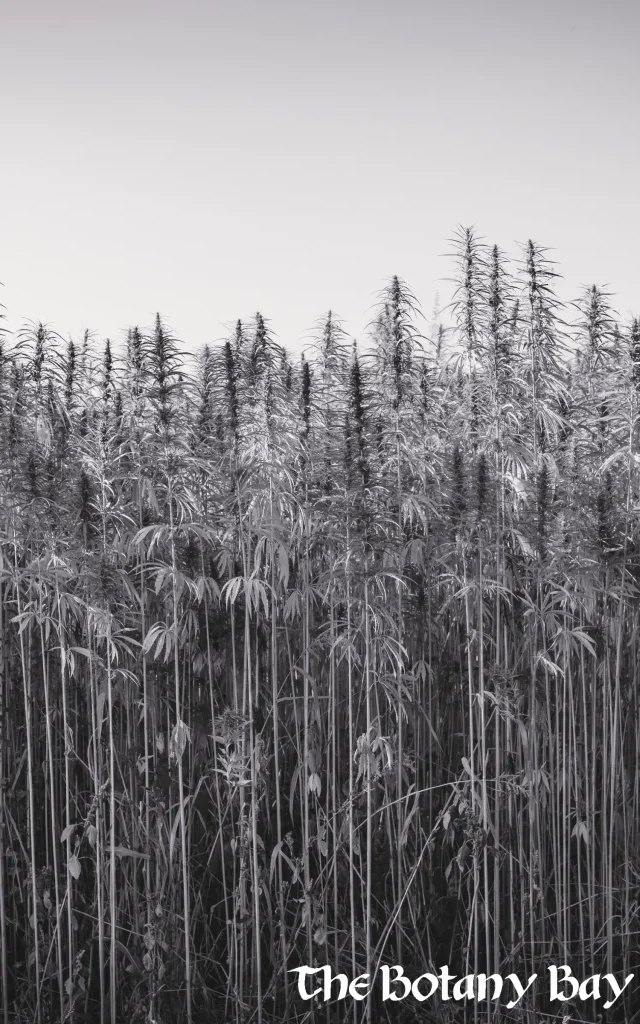Understanding Cannabis
Your Comprehensive Guide to Cannabis
At The Botany Bay, we want to provide a clear and reliable source of information about Cannabis — a plant that has been cultivated for thousands of years for its fiber, seeds, resin, and unique chemical compounds. Cannabis comes in many forms and varieties, and while the plant is the same species, differences in chemical composition and legal definitions give us the familiar categories of hemp and marijuana.

What is Cannabis?
Cannabis is a genus of flowering plants in the Cannabaceae family. The most well-known cultivated variety is Cannabis sativa L., which can produce over 100 naturally occurring compounds called cannabinoids, as well as aromatic compounds called terpenes and colorful plant compounds called flavonoids.
Cannabinoids — Compounds like CBD and THC that interact with the body’s endocannabinoid system
Terpenes — Aromatic molecules responsible for scent, flavor, and potential entourage effects
Flavonoids — Plant pigments that contribute to color and may have antioxidant properties in nature
The term Cannabis applies to the whole plant — whether it is grown for industrial fiber, seed production, wellness products, or psychoactive purposes.
How Cannabis Works in the Body
Cannabis interacts with the body primarily through the endocannabinoid system (ECS) — a network of receptors (CB1 and CB2), enzymes, and naturally occurring endocannabinoids that help maintain balance, or homeostasis, in processes such as mood, appetite, sleep, and immune function.
THC and other psychoactive cannabinoids bind primarily to CB1 receptors in the brain and nervous system, which can influence perception and coordination.
CBD interacts indirectly with ECS receptors, affecting how the body uses its own endocannabinoids.
Terpenes and flavonoids may contribute through aromatic and antioxidant pathways, possibly enhancing the overall plant experience.
The effects of cannabis depend on its cannabinoid profile, terpene content, method of use, and individual body chemistry.
These interactions are still being researched, and effects vary from person to person.

Ancient History of Cannabis
A plant with a long past. Flip to learn more…
Cannabis has been used by humans for thousands of years. Archaeologists have found cannabis pollen and seeds in ancient sites, including tombs in China — and evidence suggests it was present in King Tutankhamun’s tomb over 3,000 years ago.
Cannabis Beyond Cannabinoids
More than THC and CBD – the full spectrum of plant chemistry. Flip to see more
Cannabis produces over 100 cannabinoids, more than 150 terpenes, and unique flavonoids called cannflavins. These compounds contribute to aroma, flavor, color, and the plant’s natural defense system.
Legal Status of Cannabis
Hemp — Federally legal under the 2018 Farm Bill if compliant with the THC limit. State rules still apply.
Marijuana — Federally illegal, but permitted for medical or adult use in many states with their own regulations.
Always check your state and local laws before buying or using cannabis products.

Reported Uses and Applications
Hemp-derived products:
CBD oils and tinctures
Hemp seed food products
Textiles, rope, and paper
Building materials like hempcrete
Marijuana-derived products:
THC-rich flower, edibles, and extracts
Medical cannabis under state programs
Recreational cannabis in legal markets
Effects and uses are based on anecdotal reports and preliminary research. They are not guaranteed and will vary by product and person.
How People Use Cannabis
Inhalation — Smoking or vaporizing flower and concentrates
Oral ingestion — Edibles, capsules, beverages
Sublingual — Tinctures and sprays under the tongue
Topical — Creams, balms, lotions for localized application
Industrial — Hemp fiber for textiles and building materials
Testing and Transparency
At The Botany Bay, all hemp-derived products we carry are:
Third-party lab tested for cannabinoid content and purity
Screened for pesticides, heavy metals, and residual solvents
Labeled clearly with cannabinoid profiles and serving suggestions
Compliance Disclaimer
This content is for educational purposes only and has not been evaluated by the Food and Drug Administration. Cannabis products are not intended to diagnose, treat, cure, or prevent any disease. Always consult with a healthcare provider before using any cannabinoid product, especially if you are pregnant, nursing, or taking medications.
FAQs About Cannabis
Is cannabis the same as hemp or marijuana?
Can hemp cause intoxication?
Is cannabis legal?
Does cannabis always contain CBD and THC?
NEWSLETTER
Sign up to our newsletter to keep updated with our latest offers and products.
Disclaimer:
Some products sold by The Botany Bay are not scheduled under U.S. federal law but may be subject to restrictions in certain states or localities. The Botany Bay only sells to jurisdictions where these products are legal, and it is the customer’s responsibility to ensure compliance with their local, state, or international laws before purchasing. These products have not been evaluated by the FDA and are not intended to diagnose, treat, cure, or prevent any disease. The Botany Bay does not guarantee compliance with local or international regulations.
© 2025 The Botany Bay All Rights Reserved
- 0 Items
- View Cart
